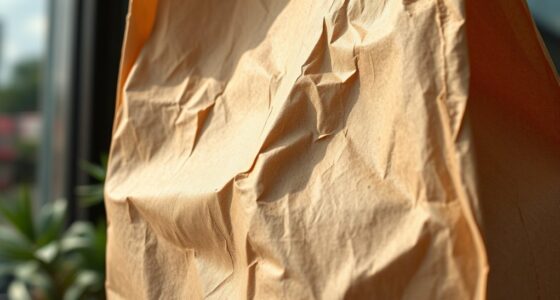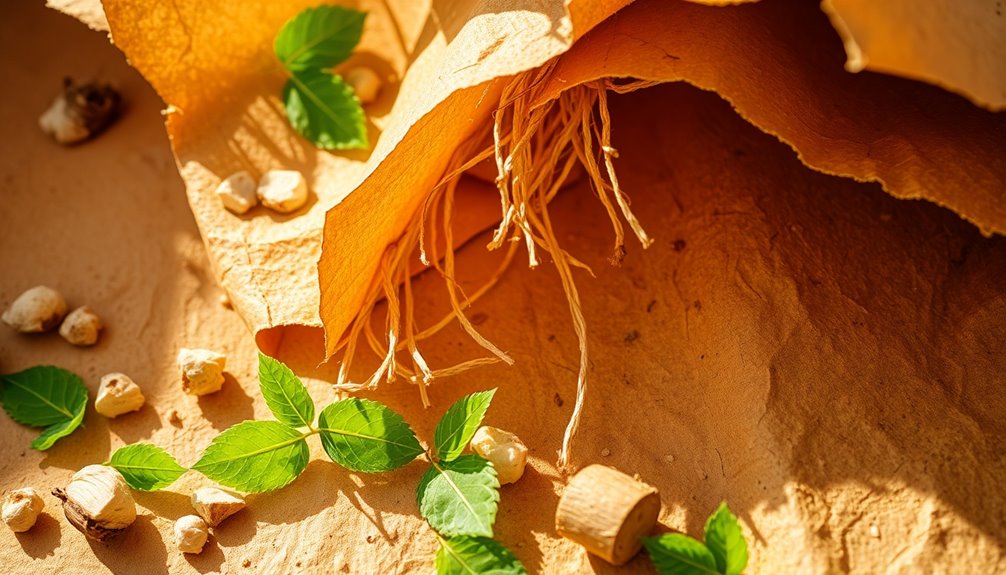You might be surprised to learn that paper was invented during the Han Dynasty in China, around 105 CE. A court official named Cai Lun created it using mulberry bark, hemp, and rags. This innovative method replaced heavier materials like stone and clay, making writing more accessible. As demand for paper grew, it transformed communication and documentation, fueling civilization's progress. The techniques Cai Lun developed influenced papermaking beyond China, spreading along the Silk Road. Curious about how this invention affected the world or its environmental impact? Well, there's much more to uncover about paper's fascinating journey.
Key Takeaways
- Paper was invented during the Han Dynasty (206 BCE – 220 CE) in China by court official Cai Lun in 105 CE.
- The initial materials for paper included mulberry bark, hemp, and rags, enhancing portability compared to stone and clay.
- The invention of paper significantly improved documentation and communication, fueling the growth of civilization during the Han Dynasty.
- The techniques of papermaking spread along the Silk Road, influencing subsequent dynasties and cultures.
- The introduction of pulped paper from Arabs eventually led to the decline of papyrus production in Egypt.
Ancient Chinese Papermaking Techniques
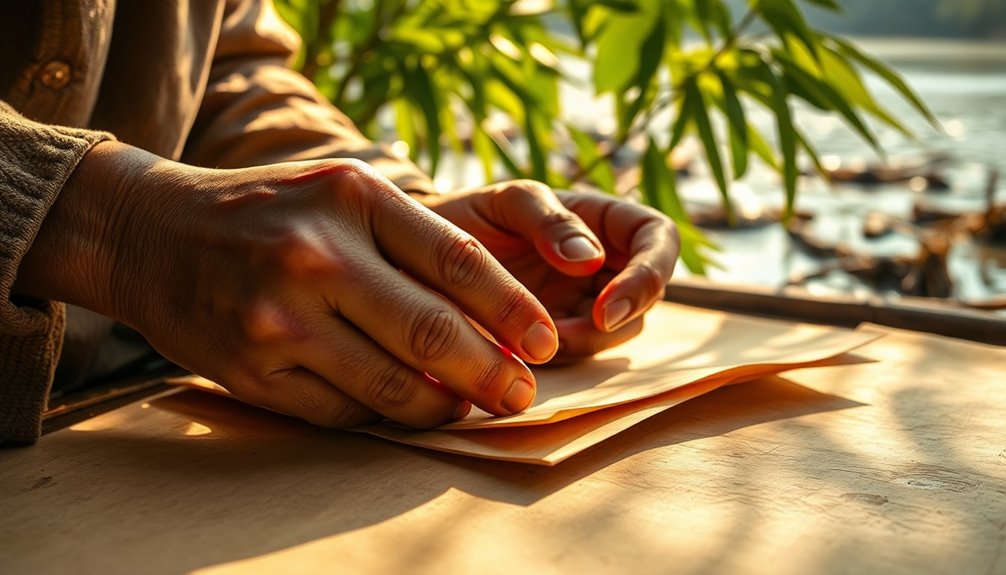
In ancient China, papermaking was a meticulous process that transformed raw plant materials into a valuable medium for writing and communication. You'd start with common materials like bamboo, hemp, and tree bark, cutting them into manageable pieces. Soaking these fibers in lime and boiling them was crucial, as it softened the materials for further processing. After that, you'd macerate and bleach the fibers under the sun and rain, preparing them for the next stages.
Next, you'd pound the fibers using a pestle and mortar, creating a pulp. Mixing this pulp with water—sometimes adding a gelatinous agent—was essential for achieving the right consistency. You'd then compress the mixture through a sieve to form a uniform fiber slurry. Additionally, the entire papermaking process reflects techniques closely aligned with those documented by Song Yingxing.
To shape the paper, you'd scoop the slurry onto a paper mold made of coarsely woven cloth in a bamboo frame. Manipulating it to form a thin layer, you'd drain excess water, letting the wet pulp settle into a flat sheet. Finally, you'd pile the sheets, interspersed with felt, compressing and drying them, resulting in various types of paper ready for different purposes.
Invention During Han Dynasty
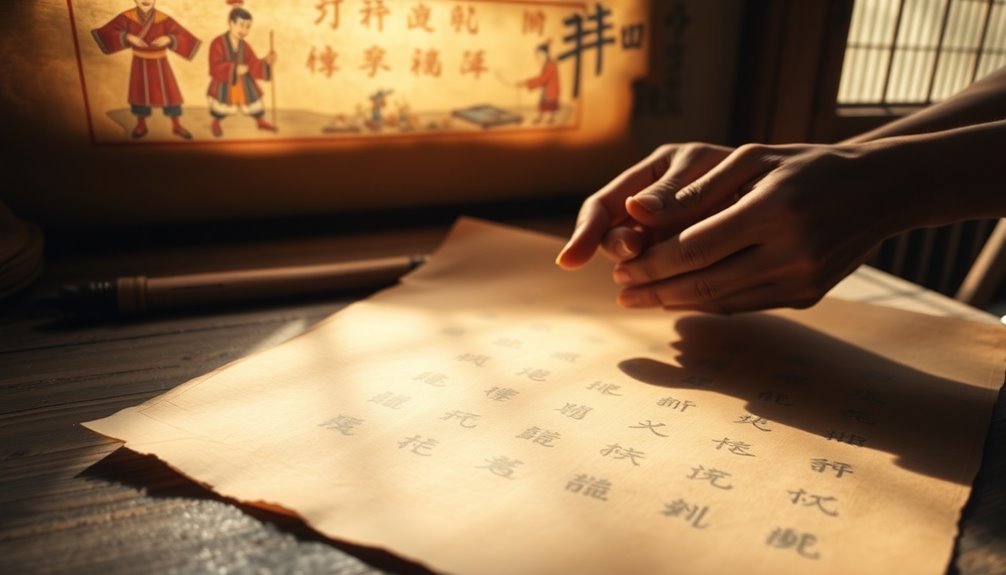
Transforming the landscape of communication, Cai Lun's advancements in papermaking during the Han Dynasty marked a pivotal moment in history. As a court official and director of the Imperial Workshops at Luoyang, he dedicated his efforts to refining and standardizing paper production around 105 CE. Using rags, mulberry, and various plant fibers, Cai Lun innovated a process that would change the way knowledge was recorded and shared. This innovation led to the development of sized, coated, and dyed paper, enhancing the quality and variety of paper products.
Before Cai Lun's contributions, primitive forms of paper existed, but they were not widely used. His method enabled paper to replace heavier materials like bamboo and costly silk, making writing more accessible. This shift fueled the rapid development of Chinese civilization, as the demand for paper in government administration soared.
Cai Lun's techniques didn't just stay within China; they spread along the Silk Road, reaching central Asia and beyond. The Han Dynasty laid the groundwork for future papermaking, with subsequent dynasties, such as the Tang and Song, building on his innovations. Thanks to Cai Lun, paper became an indispensable tool for writing, art, and culture, forever reshaping communication.
DIY Papermaking at Home

Cai Lun's innovations in papermaking not only changed history but also inspired many to explore the craft themselves. You can easily create your own paper at home with just a few materials and some patience. Start by gathering scrap paper—plain or printed—and cut it into small pieces, about one inch squares. Soak these pieces in water for several hours or overnight, using warm water to speed up the process.
Once the paper is soaked, grind it into a pulp using a blender or a mortar and pestle. Check the consistency to ensure the pieces have softened adequately. Additionally, you can reuse drained water from previous batches to further enhance your papermaking process. Next, prepare a mould and deckle, which can be homemade or purchased. Fill the mould with the pulp mixture and adjust the pulp-to-water ratio to control thickness. Gently rock the mould to distribute the fibers evenly, allowing excess water to drain.
After forming the sheet, transfer it to absorbent materials like kitchen towels. Press it gently to remove extra water, then let it dry completely, which may take several hours or even days. Feel free to add unique touches, like color or embellishments, to make your paper truly one-of-a-kind!
Environmental Impact of Paper
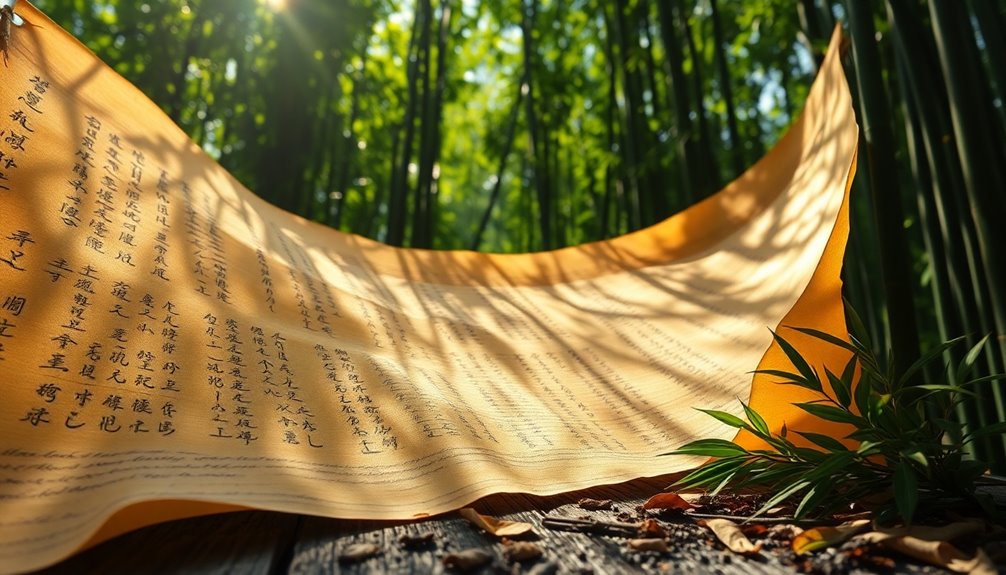
The environmental impact of paper production is profound, affecting everything from forests to waterways. You might be surprised to learn that the paper industry is one of the largest consumers of energy globally, using about 324 liters of water to produce just 1 kilogram of paper. If you choose recycled paper, you can lower energy consumption by 70% compared to using virgin fibers.
Air pollution is another pressing issue. The pulp and paper industry emits significant amounts of toxic gases, accounting for 20% of all industrial toxic waste in the USA alone. Emissions of nitrogen dioxide and sulfur dioxide contribute to acid rain and greenhouse gases, posing serious health risks.
Water pollution from paper manufacturing isn't any better. The chemicals released harm aquatic life and disrupt ecosystems, with a staggering 10 liters of water needed to produce a single A4 sheet. Moreover, paper production leads to deforestation, with around 17 trees needed for a tonne of white paper. The industry is also a significant consumer of water, needing 10 liters per sheet of paper, contributing to substantial water pollution.
Finally, paper waste fills landfills, occupying about 17% of global landfill space. By understanding these impacts, you can make more environmentally conscious choices regarding paper use.
Historical Papermaking in Egypt

In ancient Egypt, papyrus played a crucial role in everyday life, serving as the primary writing material for everything from administrative records to literary masterpieces. Made from the Cyperus papyrus plant found along the Nile River, this grass-like plant was incredibly versatile. You'd find it used not only for writing but also for crafting boats, ropes, baskets, and mats. Harvesting papyrus involved cutting tall, fibrous stalks into thin strips, soaking them in water to soften, and peeling away the outer rind.
Once prepared, you'd lay the softened strips in a grid pattern, pound them flat, and let them dry. Starch acted as a natural glue, allowing you to create larger sheets by joining smaller mats. The resulting papyrus sheets, though durable, often curled up, leading to the creation of scrolls for easier handling. Interestingly, the production process of papyrus resulted in sheets that were thicker and more durable than modern paper, enabling them to last for millennia.
As Egypt's greatest export, papyrus revolutionized how information was stored, but its popularity declined with the arrival of pulped paper from the Arabs. Today, while papyrus is scarce in Egypt, it thrives in regions like Sudan and Uganda, reminding us of its historical significance.
Paper's Role in Communication
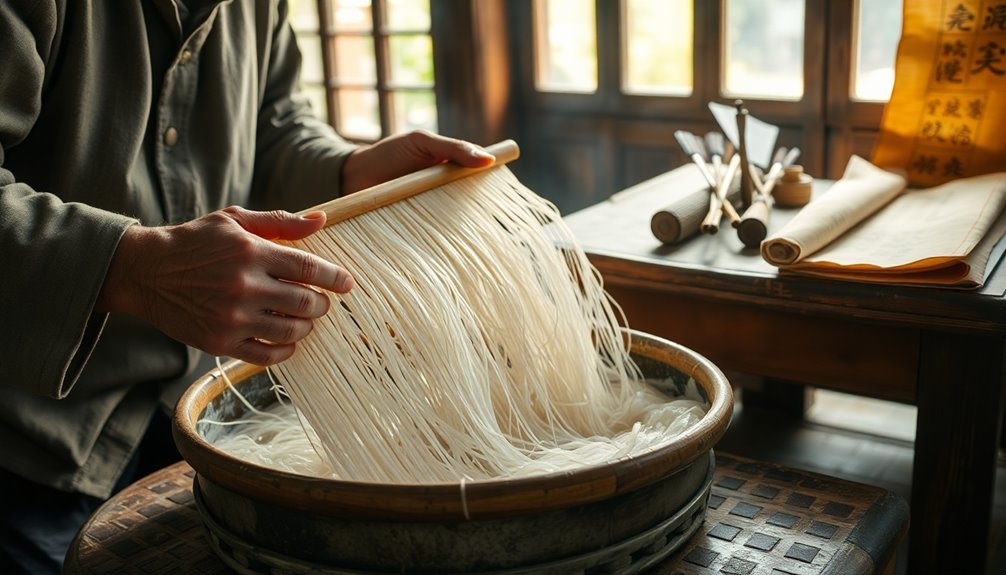
Paper has played a transformative role in communication since its invention. Developed by Cai Lun during the Han Dynasty around 105 CE, this lightweight and versatile material revolutionized how people recorded and shared information. Initially used by the elite for literature, religious texts, and government documents, paper gradually became accessible to common people, enhancing written language and societal advancement.
As papermaking spread along the Silk Road to the Middle East and later to Europe, it significantly influenced communication practices. The technology faced initial resistance in Europe, where parchment and vellum were preferred. However, as paper became more affordable, it gained popularity, fueling the Islamic Golden Age and facilitating the spread of knowledge. Paper's invention marked the transition from stone and clay to a more portable writing material, allowing for increased documentation and communication.
In Europe, paper played a pivotal role in the Renaissance, Reformation, and Enlightenment, especially when combined with the printing press. This combination allowed for mass production of texts, leading to a literacy boom that transformed education, science, and religion. Additionally, during the Age of Exploration, paper became essential for documenting journeys and discoveries, enabling effective administration and communication across colonial empires.
Frequently Asked Questions
Who Were the Key Figures in the Invention of Paper?
When you explore the invention of paper, you'll find key figures like Ts'ai Lun, who refined the process in China around 105 CE. Johannes Gutenberg revolutionized printing in the 15th century with his printing press. In the late 18th century, Louis Robert created the first papermaking machine, further improved by the Fourdrinier brothers. In the 1930s, George H. Tomlinson invented the recovery boiler, enhancing environmental practices in paper production.
How Did Papermaking Techniques Spread to Other Cultures?
Papermaking techniques spread to other cultures primarily through trade routes like the Silk Roads. As you explore these connections, you'll find that Buddhist monks played a key role, carrying paper to Japan and other regions to document important texts. In Central Asia, captured Chinese papermakers taught locals the craft. Eventually, Islamic scholars refined these methods, establishing paper mills across the Arab world and Europe, fundamentally changing writing practices in these cultures.
What Materials Were Originally Used to Make Paper?
You'd be surprised at the variety of materials used in early papermaking. They primarily relied on plant fibers like hemp, bamboo, and mulberry bark. You'd also find textile waste, such as old rags and fishing nets, being recycled into paper. Other natural materials, including sandalwood bark and cabbage stalks, contributed to the mix. For high-quality paper, specialty fibers like rice and wheat straw were often included, showcasing incredible resourcefulness in ancient crafting techniques.
How Did Paper Influence Education in Ancient Societies?
Paper revolutionized education in ancient societies by making writing materials more accessible and affordable. You noticed how it replaced bulkier materials, allowing for easier transportation of texts and books. This shift led to increased literacy rates as scholars could cite numerous sources, enhancing academic rigor. With the ability to produce complete books, a strong reading culture emerged, fostering knowledge dissemination and ultimately advancing societal growth. Paper truly transformed the educational landscape.
What Were the Early Uses of Paper Beyond Writing?
When you explore the early uses of paper beyond writing, you'll find it played a crucial role in various aspects of life. It served as clothing and bedding in some cultures, aided in packaging and wrapping, and became popular for crafts and decorative items. You'll notice it was also used in financial documents and traditional rituals, showcasing its versatility and significance in daily life and cultural practices.



